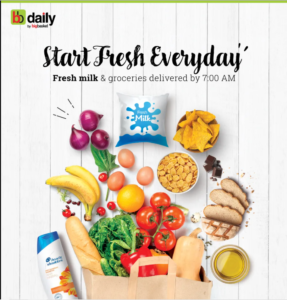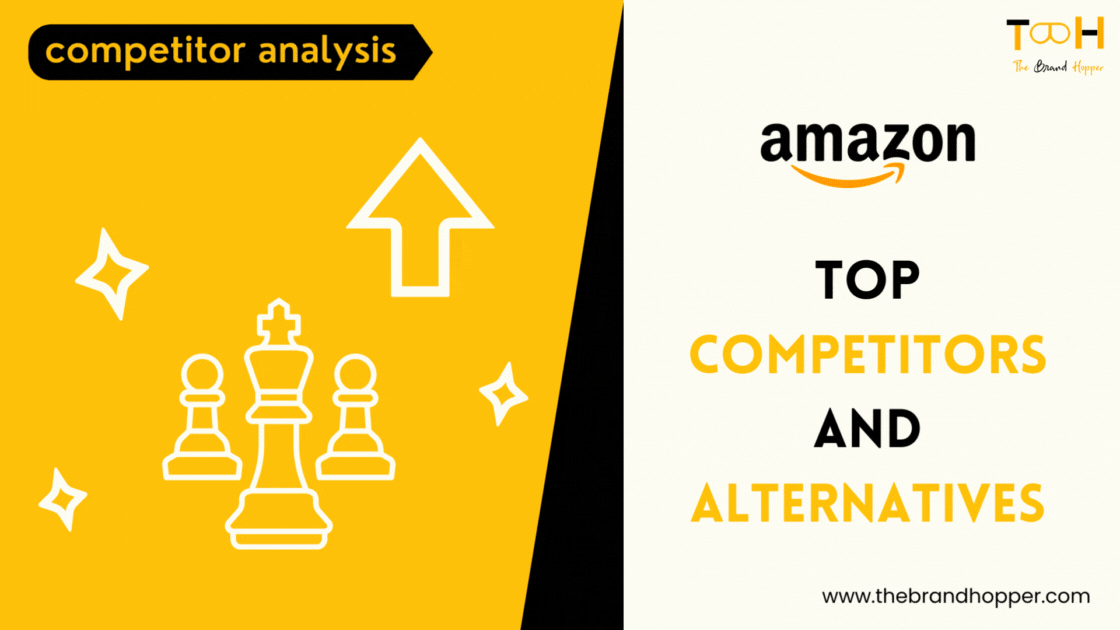India’s online grocery delivery market is projected to see a 76% year-on-year rise in revenue in 2020 to $3 billion in volume. As the COVID-19 shutdown and quarantine steps compel Indian customers to change their shopping patterns, websites such as BigBasket, Amazon, JioMart, and Grofers have benefited from this situation. Although these businesses have been struggling with food and grocery delivery, they have recently seen exponential growth in grocery deliveries.
BigBasket is one of the largest online grocery Supermarkets in India. It was founded in 2011 by V S Ramesh, Hari Menon, VS Sudhakar, Vipul Parekh, and Abhinay Choudhari. It is headquartered in Bangalore and operates in more than 34 cities in India. Various products ranging from fresh fruits, vegetables, food grains, oil, masala, frozen snacks, juices, household goods, and wellness items are sold on BigBasket. In its portfolio, it sells over 20000 products and 1000 labels. It has over 10 million customers consisting of working professionals, students, aged people who have no time and energy to go to grocery stores and buy the necessary products. Customers can order the required products to be delivered within 90 minutes for express delivery or the next morning for slotted delivery.
BigBasket has acquired milk delivery ventures Raincan and Morning Cart. It has got a controlling share in the smart vending machine Startup KWIK24. The milk delivery service was named BB daily, where customers can get milk delivered to their homes every day by subscribing to their service. Over 100 smart vending machines have also been installed in Bangalore by BigBasket. Customers will order and get the items from vending machines via the BB instant app. A hyperlocal distribution startup called Delyver was also acquired. It has helped reinforce the delivery system in all the cities in which it operates.

Business Model Analysis
BigBasket has a hybrid model that combines Inventory Lead and a hyper-local procurement strategy. For high order fill rates and longer self-life goods, they adopt an inventory-led wholesale approach, although they often use a hyper-local method to get perishable products in the just-in-time model to retain top quality and bottom expense. They have a smartphone app and a website, earning about 70% of their income.
Now, let’s discuss the business model of BigBasket in detail using the below framework:
1. Customer Value Proposition
There is a different aspect that a consumer finds to be vital for them. Adding value to the product or service that provides the customer with more value than what they are looking for would ensure the company’s position against its rivals.
- Emotional Value. As the working people are more influenced by their peers, it makes it a habit for the customers to use BigBasket for ordering groceries online. The service offered to the customer looks appealing when they get whatever Grocery they want; and when they want to get it. This service boosts their convenience and can make long-term online grocery shopping a typical process as consumers become emotionally attached.
- Functional Value. As the Population of Urban areas increases, the shops get more congested, and traffic in the cities rises. After a tiring work routine in a busy place, buying groceries for working people brings more burden and makes the experience more unpleasant. BigBasket offers its consumers a functional value where they can buy the groceries online, and BigBasket delivers them at the customers’ doorstep when they want it.
- Economic Value. It costs the customer even less time and resources to buy groceries online. If the consumer must visit a retail store to buy the same, the extra expenses and wastage of time due to different external variables overshoot the grocery purchase cost. BigBasket provides consumers with more economic opportunities by helping them save time and resources. Also, since BigBasket directly procures products from the farm/producers, the layers in between have been removed, thereby providing lower prices to the customers.
2. Growth Model
It is challenging for BigBasket to sustain the competition with Amazon Pantry and Swiggy Stores’ entry into the Indian market. In addition to the inventory model, BigBasket includes a dedicated Hyperlocal model to reduce the distance to meet the consumer and enhance its services. When a super local supermarket distributes the order, there has been a 70 percent drop in prices. But to sustain in the competition, hyper-local stores are difficult to manage and maintain the standard quality of BigBasket.
BigBasket provides a subscription program, BB Star, to ensure client retention, where a client can pay a subscription fee to get different features for free. Orders over Rs.600 will be shipped without any shipping costs for a BB star customer; preference is given for selecting delivery slots, etc. This will encourage the company to avoid consumers from going to rivals.
BigBasket also introduced BB daily and BB instant. BB instant uses kiosks, where the customers can buy the products through the mobile app. BB daily offered dairy products, bakeries, and flowers delivered during the early hours of the day. It has also introduced various sections based on customer needs. In the history of the online grocery business, BigBasket has failed not because of their service but due to the technology’s introduction at the wrong time.
3. Revenue Model
BigBasket has completed 16 funding rounds and raised $1.20 billion of total funding till now. They have 12 million registered customers. BigBasket processes 1 lakh orders daily across 34 cities in India.
BigBasket follows different revenue models:
- Procurement based. BigBasket procures groceries directly from the farm and other producers and stores them in the Inventory. They sell the items through their online Applications with their branding and a margin and provide home delivery as a value-added service.
- Subscription-based. BigBasket offers a subscription plan to its customers where the customers can get free delivery on orders of Rs.600 above and get priority slots for delivery bookings. This model ensures the retention of the customers and more repeat purchase orders from the customers.
Competitive Analysis
The direct competitors of the BigBasket are Grofers and Fresh To Home. Big players Amazon, Walmart, and Reliance Jio have also started their grocery business recently. The other new entrants are Swiggy, Zomato, and Dunzo.
- Grofers
Grofers is the main competitor of BigBasket. It was started in 2013, and Softbank backs it. It differentiates itself by offering more deals and products at lower prices than BigBasket. It targets people who are more price-conscious and want better offers. People buy from Grofers to get good deals, while BigBasket customers buy from it as it has a wide variety.
- Amazon
Amazon, the e-commerce giant, has recently entered the grocery business in India. It has over 10 crore prime users who have automatically become customers for its new business venture. Amazon provides Amazon Fresh, Its fresh vegetable and fruits platform, in Bangalore, Delhi, Mumbai, and Pune. It is likely to expand this feature to other cities as well. Its Amazon Pantry feature for other grocery products like packaged foods, snacks, beverages, etc is available in India’s 140 cities. With taglines like “Aapki Apni Dukaan” and “Apno ka Saath” it has tried to touch upon the Indian aspect of the Kirana store (from where most Indians fulfil their grocery needs)
- Zomato/Swiggy Market
During these COVID times, Swiggy and Zomato have also entered into the online grocery delivery segment. As there was the lockdown imposed on the whole nation, Swiggy/Zomato has levered on their presence in all Tier cities/towns to partner with the local Kirana stores to deliver the Grocery needs to the customers. They are catering to the Tier-1/Metro cities and also other tier cities where BigBasket is not currently operating. They are using a tagline of “Safe hai” and “No-contact Delivery.”
Customers’ demands, such as groceries, medicine, laundry, pet products, fitness and wellbeing, toys, bike trips, pick-up and dump, and many more, are fulfilled immediately. If you forget any of the papers at home, Dunzo will get them to your office. It is beneficial for those who cannot go out for any reason and wants to buy something or complete a task. It has a tie-up with Kirana stores, restaurants, departmental stores, and a few clothing stores. The business model creates an opportunity to earn money for the younger generation to make money on their available time. It expanded its wings from headquarter Bengaluru to eight other cities like Delhi, Noida, Gurugram, Pune, Chennai, Jaipur, Mumbai, and Hyderabad with the tag line “Sab Sambhal Lete Hai Hum.”
Strategies that BigBasket can adopt
With the increasing competition in the rapidly growing E-Grocery Market, BigBasket should adapt new strategies to target new customers and retain old customers. Some of the strategy BigBasket can adapt to compete in the market are:
- BigBasket Golden days: It is a marketing technique used currently by Grofers. The company declares a few days of the month, say Oct 25 to Oct 29, as Happy days. These days, customers would get special discounts and offers on products. This is like Amazon’s ‘Great Indian Festival’ and Flipkart’s’ Big billion days.’ There is a high probability that this technique would for BigBasket, the same way it worked with e-commerce companies.
- Expand to New cities: BigBasket, no doubt, is trying hard to serve the best in most metros and Tier 2 cities. It can also work on expanding to newer cities. With Amazon Pantry, backed by its cash-rich parent Amazon, now entering Grocery, it is now essential for BigBasket to fine-tune its logistics and improve efficiency.
- Continuously improving from buyers’ feedback: BigBasket should be active enough it taking buyers’ feedback; it can be from BigBasket App or website and should seriously work on improving where it’s lagging. This is an excellent source of information where BigBasket can understand its good at and where it must improve.
Along with these strategies, BigBasket should follow the below-mentioned Contextual Marketing design to stand out from the competitors in the market:
- Set Marketing Objectives: Giving offers to churn valuable customers and churn BigBasket shopper are the highest priority. Secondary priority goes to the most helpful customer and BigBasket shopper. The third priority goes to the first-timer and barnacle customer.
- Select Targeted Promotional Offers: Map the marketing objectives into a marketing strategy and the template of promotional offers and messages. For the BigBasket case, it can be defined as follows:
- Select Advertising Channel. The first channel is the banner in every product category. The second one is direct mail marketing. And thirdly is SMS.
- Timing of Ads Delivery. The peak hour, in general, is around 9 am and 8 pm. Some of the categories also have peak hours outside those hours. If BigBasket wants to send notifications and message blasts, it is recommended to send them in the morning and evening before the peak hour.
- Targeted Direct Mail. Direct mail is sent to each customer differently depending on the customer profile.
[wpforms id=”320″ title=”true”]



